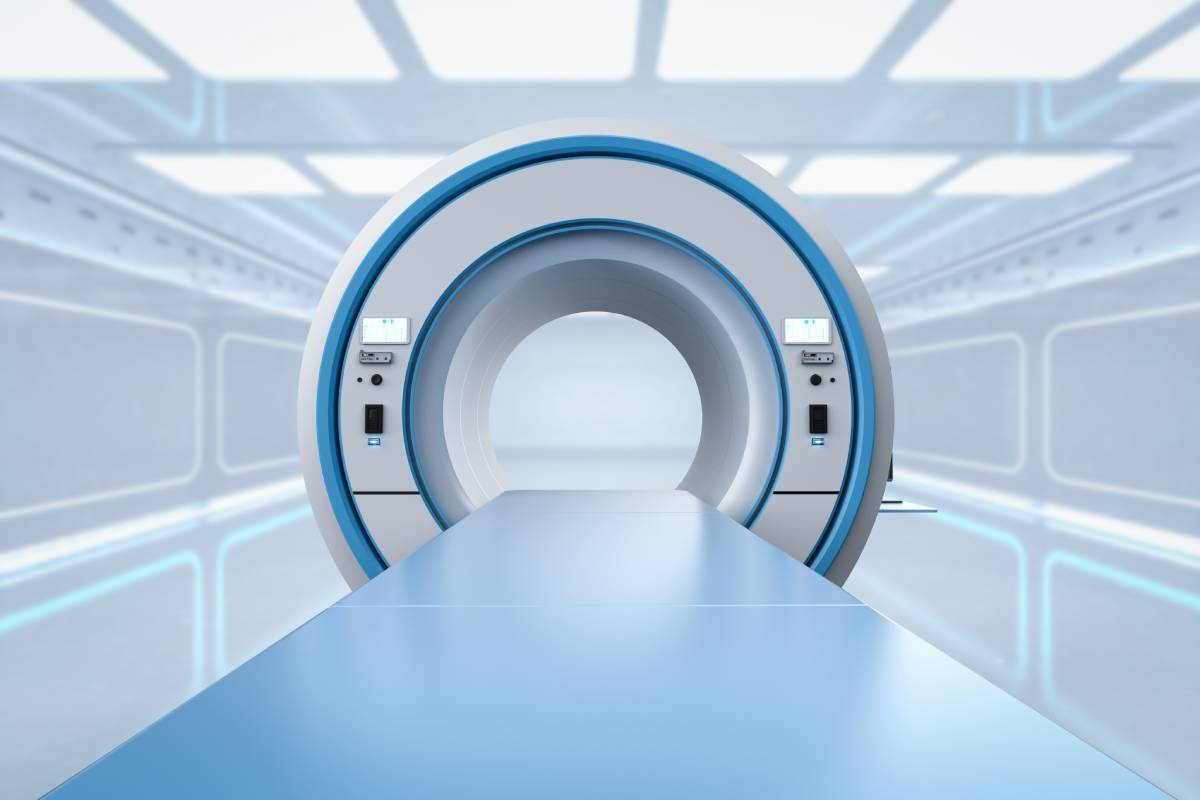MRI-Compatible Anesthesia Machines
September 26, 2023
Administering anesthesia in novel contexts is becoming more and more common. Increasing numbers of therapeutic and diagnostic procedures are performed outside of the operating room. In particular, the demand for anesthesia care in magnetic resonance imaging (MRI) suites continues to rise as interventional procedures using MRI increase steadily in frequency 1,2. When working with MRI machines, however, anesthesia providers face a major logistical roadblock – their machines must be compatible with an MRI.
Anesthesiologists may need to work under conditions that are far from ideal, in MRI suites that can be cold and dark, have noisy equipment, and be located far away from the main operating room(s) 3. Furthermore, the difficulty is exacerbated by the fact that not all anesthesia machines are yet MRI compatible, let alone MRI safe.
Not all anesthesia equipment is MRI safe to this date. Equipment made from ferromagnetic material can not only interfere with the quality of the MRI scan, but, if it is in the magnetic field of the MRI, become a projectile and damage the patient, personnel, or other equipment. Making sure that there are no magnetic materials that may be acted on by the MRI is a crucial safety step in any scan. There have been incidents in which gas cylinders or other pieces of metallic items have led to patient injury or even death. In addition, burns to the patient can also result from the use of standard monitoring cables, pads, or probes 4.
Fortunately, some anesthesia equipment has been designed such as to minimize any chance of patient injury, while interfering in the least possible manner with the MRI image 4. Such specialized equipment is thus MRI compatible in that it is safe to operate alongside MRI machines. Many such MRI-compatible anesthesia machines are commercialized today 5–7.
Some researchers argue that is it important to stress the importance of anesthesia-compatible MRI as well, rather than putting all the emphasis on anesthesiologists adapting to the needs of MRI machines. Adding this perspective, there are three aspects that are key: 1) the avoidance of materials and equipment that will be attracted to the MRI machine, 2) the avoidance of anesthetic devices that interfere with the function of the MRI machine, and 3) the avoidance of MRI interference with the patient and the functioning of materials and devices used for anesthesia.
Even though some MRI properties are inevitable, such as magnetic attraction, electric shock, or heating as a result of radiofrequency pulsing, more attention needs to be paid to addressing these challenges.
In the end, some clinicians argue that it would be more cost-effective and safe to improve MRI machines and their installation, including the architectural design of MRI suites, than it would be to carry out a patchwork renovation of numerous patient care devices to make them as MRI compatible as possible.
Anesthesiologists, as advocates for patients, need to actively voice their concern to improve MRI technologies in terms of working environment, duration of examination, and, most importantly, patient safety. Meanwhile, it may be just as important to focus on anesthesia-compatible MRI equipment and procedures as it is on MRI-compatible anesthesia machines to ensure the safest anesthesia delivery possible across clinical contexts.
References
1. Manninen, P. H., Gignac, E. M., Gelb, A. W. & Lownie, S. P. Anesthesia for interventional neuroradiology. J. Clin. Anesth. (1995). doi:10.1016/0952-8180(95)00074-R
2. Schmitz, B. et al. Anesthesia during high-field intraoperative magnetic resonance imaging experience with 80 consecutive cases. J. Neurosurg. Anesthesiol. (2003). doi:10.1097/00008506-200307000-00014
3. Miyasaka, K. et al. Anesthesia-compatible Magnetic Resonance Imaging. Anesthesiology 102, 235–235 (2005).
4. Anesthesia Equipment for Magnetic Resonance Imaging | Anesthesia Equipment Simplified | AccessAnesthesiology | McGraw Hill Medical. Available at: https://accessanesthesiology.mhmedical.com/content.aspx?bookid=871§ionid=51860179. (Accessed: 14th September 2023)
5. MRI-Compatible Anesthesia Machines – Avante Animal Health. Available at: https://avantevet.com/c/mri-compatible-anesthesia-machines/183. (Accessed: 14th September 2023)
6. MRI-compatible anesthesia workstation – All medical device manufacturers. Available at: https://www.medicalexpo.com/medical-manufacturer/mri-compatible-anesthesia-workstation-52729.html. (Accessed: 14th September 2023)
7. MRI-Compatible Anesthesia. Available at: https://www.dremed.com/catalog/index.php/cPath/603_600. (Accessed: 14th September 2023)